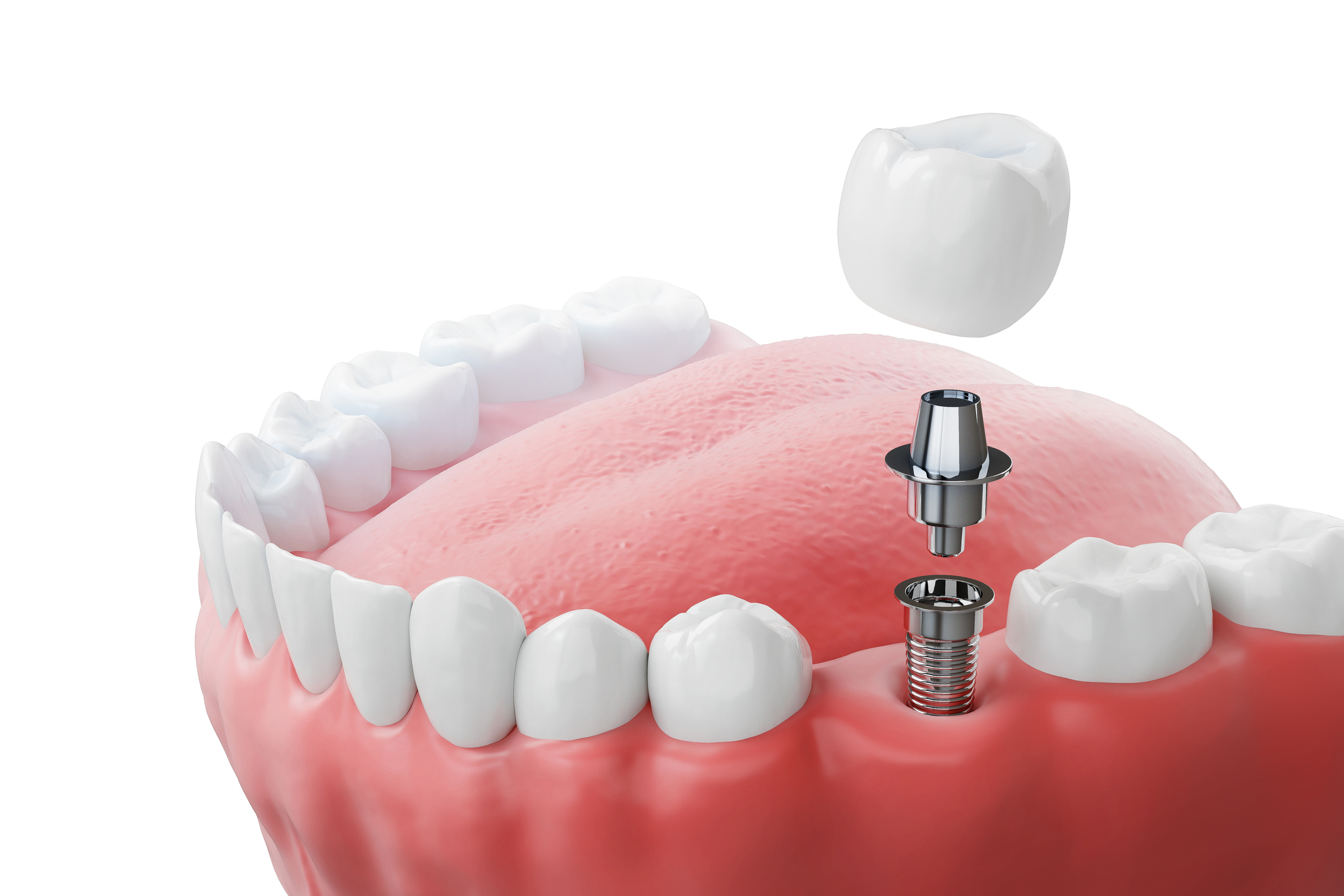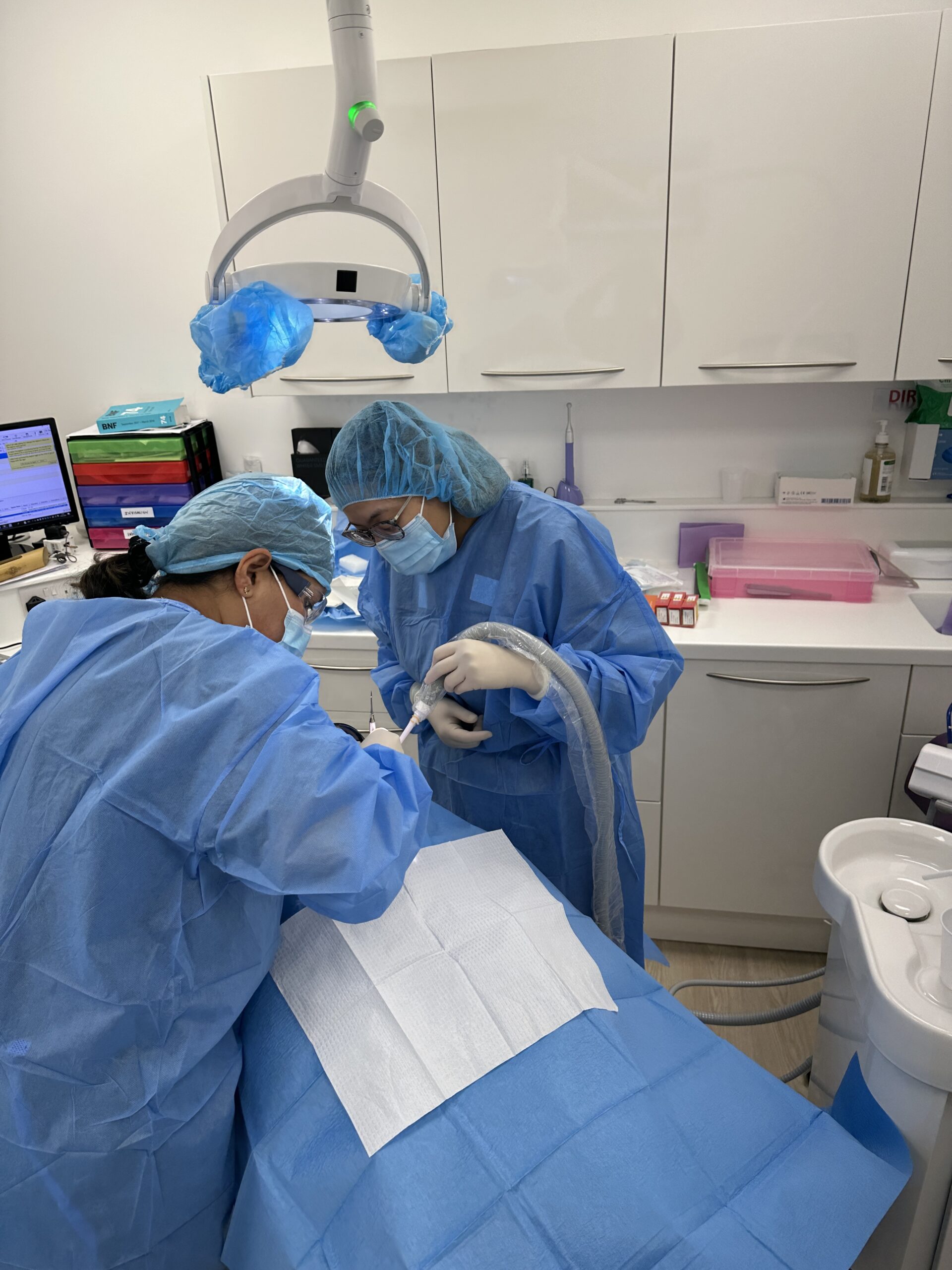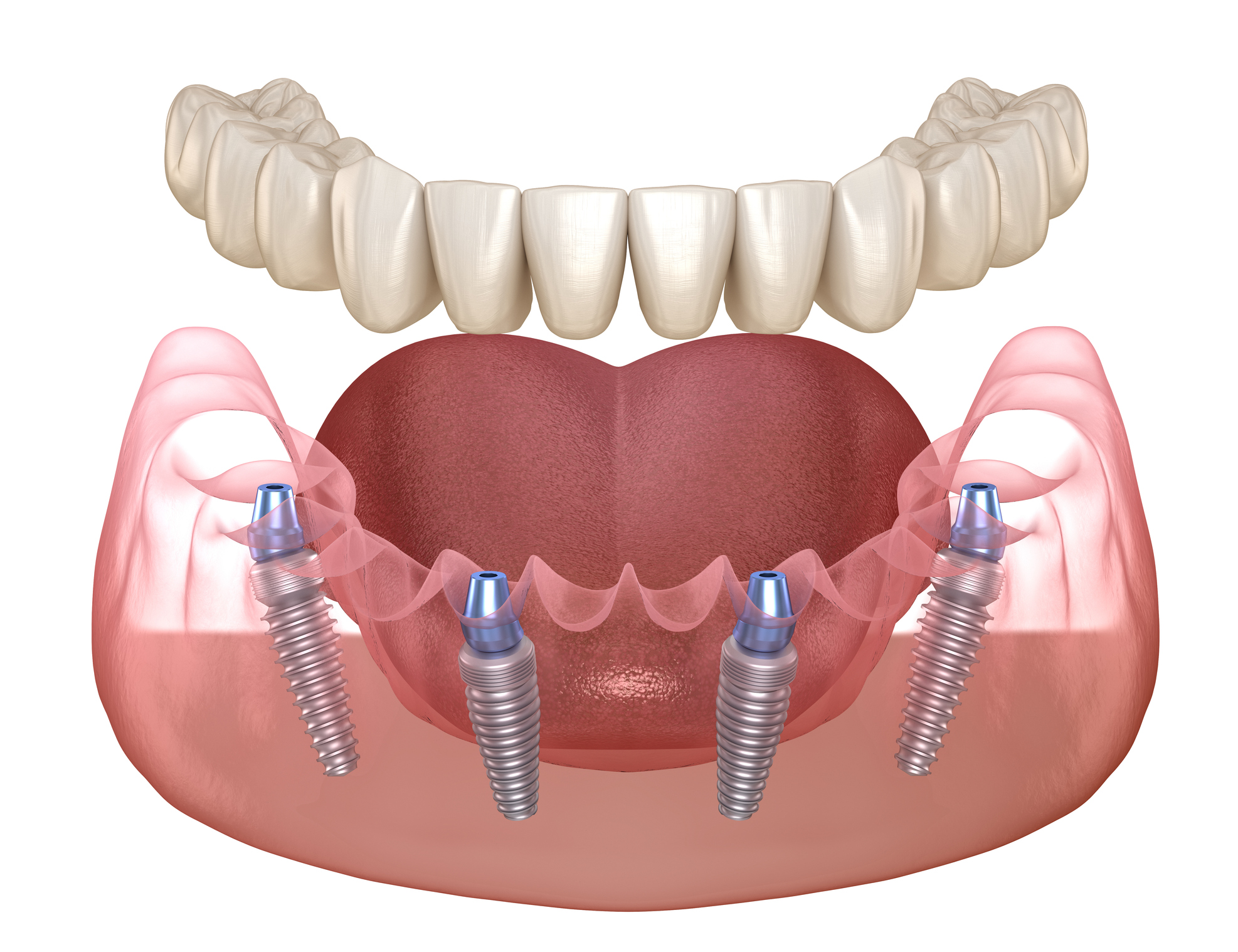
A Comprehensive Guide to Dental Implants: Benefits and Procedure
Dental implants serve as a modern solution for missing teeth, acting as artificial tooth roots designed to provide a strong foundation for fixed or removable replacement teeth. These implants are made from biocompatible materials, such as titanium, which are surgically placed into the jawbone beneath the gum line. This process allows the bone to heal around the implant, securing it in place and providing the stability needed for artificial teeth to look, feel, and function like natural teeth.
The popularity of dental implants has grown significantly in recent years, and they are now considered a long-term solution for replacing missing teeth. This surge in popularity can be attributed to several factors, including their high success rate, the improvement in oral health they offer, and their ability to restore the function and aesthetics of natural teeth. Unlike traditional dentures or bridges, dental implants do not require adjacent teeth to be altered, which helps preserve more of the natural tooth structure. Additionally, implants are designed to integrate with the bone, helping to prevent bone loss and maintain facial structure over time.
This comprehensive approach to tooth replacement has made dental implants a preferred option for many patients and dental professionals alike, providing a durable and cosmetically appealing solution to tooth loss.
What are the Benefits of Dental Implants?
Dental implants offer a wide range of benefits, making them an excellent choice for tooth replacement for many individuals. Here are some of the key advantages:

-
- Improved Aesthetics and Natural-Looking Results: Dental implants are designed to look, feel, and function like your natural teeth. They are custom-made to match the color and shape of your surrounding teeth, ensuring they blend seamlessly with your smile. This attention to detail in the design process ensures that the aesthetic results are highly satisfying, restoring the natural appearance of your teeth and smile.
-
- Enhanced Chewing Ability and Speech: One of the most significant benefits of dental implants is the restoration of full chewing function. Because they are anchored directly into the jawbone, implants provide the strength and stability needed to chew food comfortably and efficiently, just like with natural teeth. This can greatly improve your ability to eat a wide variety of foods, contributing to better overall nutrition. Additionally, dental implants can improve speech. Missing teeth or ill-fitting dentures can cause slurring or mumbling, but implants eliminate this issue by providing a stable structure that mimics natural teeth, enabling clearer and more natural speech.
-
- Preservation of Jawbone Structure and Facial Contours: When teeth are lost, the jawbone can begin to atrophy or shrink over time due to the lack of stimulation provided by the tooth roots. Dental implants act as artificial tooth roots, providing the necessary stimulation to the jawbone to help maintain its density and structure. This preservation of the jawbone helps maintain the natural contours of the face and prevents the sunken look often associated with tooth loss.
-
- Durability and Longevity Compared to Other Tooth Replacement Options: Dental implants are designed for durability and can last a lifetime with proper care. They are made from materials like titanium, which is known for its strength and ability to fuse with bone in a process called osseointegration. This fusion provides a stable and durable foundation for the replacement teeth. While bridges and dentures may need to be replaced or adjusted over time, dental implants, if cared for properly, can serve as a permanent solution to tooth loss.
How Do Dental Implants Work – Procedure Overview
The dental implant procedure is a multi-step process that spans several months, designed to replace missing teeth with artificial ones that look, feel, and function like natural teeth. Here’s an overview of the procedure from the initial consultation to the final restoration:

1. Initial Consultation
The first step involves a thorough examination by a dental professional, who will assess your oral health, the condition of your jawbone, and discuss your medical history to determine if you are a suitable candidate for dental implants. This may involve X-rays or 3D imaging to evaluate the bone density and plan the implant placement.
2. Treatment Planning
Based on the initial assessment, the dental team will create a personalised treatment plan. This plan considers factors such as the number of teeth to be replaced and the condition of your jawbone. If inadequate bone is present, procedures such as bone grafting may be recommended to ensure a solid foundation for the implants.
3. Implant Placement
The implant placement procedure is typically performed under local anesthesia, and sedation options may be available for patient comfort. The dental surgeon will make a small incision in the gum to expose the bone and then drill a hole where the implant (a small titanium post) will be inserted. The incision is then closed, and a period of healing begins.
4. Osseointegration
Osseointegration is the process where the jawbone grows around the implanted metal post, anchoring it securely in the jaw. This phase is crucial for the stability of the implant and can take several months. During this time, patients may receive a temporary tooth replacement option if desired.
5. Abutment Placement
Once osseointegration is complete, an additional minor surgery may be required to place the abutment, which is the piece where the crown will eventually attach. The gum tissue is opened again to expose the implant, the abutment is attached, and the gum tissue is closed around, but not over, the abutment. In some cases, the abutment can be placed at the same time as the implant.
6. Crown Attachment
After the gums heal around the abutment, impressions of your mouth and remaining teeth are taken to create the final tooth (crown). The crown is then attached to the abutment, completing the process.
Common Concerns and Misconceptions
-
- Pain and Discomfort: Many people fear that the procedure is painful. However, most patients report that the discomfort is minimal, especially when compared to tooth extraction. Post-operative pain can typically be managed with over-the-counter pain medications.
-
- Success Rate: Some worry about the failure of implants. It’s important to know that dental implants have a high success rate, generally above 95%. Good oral hygiene and regular dental visits can further ensure their longevity.
-
- Time Investment: Although the process is lengthy, the result is a durable and functional replacement tooth, or teeth, that can last a lifetime with proper care.
Dental implant surgery is a highly effective long-term solution for missing teeth, offering benefits that far outweigh the initial investment of time and resources. It’s a comprehensive process that, when completed, results in a restoration that is as close to natural teeth as currently possible.
Types of Dental Implants
The two most common types of dental implants are endosteal implants and subperiosteal implants. Each type has its unique application and suitability depending on several factors related to the patient’s oral health and jawbone structure.
Endosteal Implants
Endosteal implants are the most used type of dental implant. They are typically made of titanium and shaped like small screws. They are placed directly into the jawbone, serving as an artificial root to hold a replacement tooth or bridge. After the implant is placed, a period of healing is allowed for osseointegration to occur, which is the process of the bone growing around the implant to secure it in place. Endosteal implants are suitable for patients with a healthy and sufficient jawbone to support the implant. If the jawbone is too thin or soft, a bone graft might be required before the implant can be placed.
Subperiosteal Implants
Subperiosteal implants are placed under the gum but on, or above, the jawbone. This type of implant may be used in patients who do not have enough healthy natural jawbone and cannot, or do not want to, undergo a bone augmentation procedure to rebuild it. The implant consists of a metal frame that is fitted onto the jawbone just below the gum tissue. As the gums heal, the frame becomes fixed to the jawbone. Posts, which are attached to the frame, protrude through the gums to allow for dental prosthesis placement. Subperiosteal implants are most suitable for patients unable to wear conventional dentures and those who have minimal bone height.
Candidates for Dental Implants
Ideal candidates for dental implants are individuals with good overall health and adequate oral health, including sufficient bone density to support the implants. Good oral hygiene and regular dental visits are crucial for the long-term success of dental implants.
Factors that may affect candidacy for dental implants include:
-
- Smoking: Smoking can inhibit healing in the mouth, potentially decreasing the success rate of implant surgery.
-
- Diabetes: Uncontrolled diabetes can affect healing after surgery, making the implant process less successful.
-
- Gum Disease: Healthy gums are essential for the success of dental implants. Gum disease can weaken the supporting structures of the mouth, making implants less viable.
-
- Bone Density: Adequate bone density is required to support the implant. Lack of bone density doesn’t automatically disqualify a patient, as bone grafting procedures can sometimes be performed to augment the jawbone.
Aftercare and Maintenance
Proper post-operative care helps ensure optimal healing, while ongoing maintenance ensures the long-term health of the implant and surrounding tissues. Here’s what you need to know:
Post-Operative Care
After dental implant surgery, following the dentist’s instructions is essential for healing and preventing complications. Common recommendations include:
-
- Pain Management: Use prescribed pain relievers or over-the-counter medications as directed to manage any discomfort.
-
- Oral Hygiene: Keep the implant site clean and free from infection. You may be advised to use a special mouthwash and to avoid brushing the surgical area directly for a certain period. Gentle brushing can resume in surrounding areas, following the dentist’s advice.
-
- Eating Habits: Initially, consume soft foods and avoid chewing directly on the implant site to protect the area and ensure proper healing. Gradually reintroduce harder foods as healing progresses and according to your dentist’s instructions.
-
- Avoid Certain Habits: Smoking and drinking alcohol can hinder the healing process. It’s advised to avoid these activities for a period following surgery.
Long-Term Maintenance
For the long-term success of dental implants, a commitment to oral hygiene and regular dental check-ups is vital. Here’s how to maintain your dental implants over time:
-
- Oral Hygiene: Brush at least twice a day with a soft-bristle toothbrush and floss daily, including around the implant and crown. Special interdental brushes or floss designed for implants may be recommended to ensure thorough cleaning around the implants without damaging them.
-
- Regular Dental Check-Ups: Visit your dentist regularly for check-ups and professional cleanings. These visits are crucial for monitoring the health of your implant, the condition of your gums, and the integrity of the surrounding teeth. The frequency of check-ups will depend on your individual needs, but typically they should be every 6 to 12 months.
-
- Avoid Hard and Sticky Foods: Although dental implants are designed to be durable, avoiding or being cautious with hard and sticky foods can prevent damage to the crown and undue stress on the implant.
-
- Wear a Mouthguard if Necessary: If you grind your teeth at night (bruxism), wearing a mouthguard can help protect your implants and natural teeth from excessive wear and tear.
Importance of Following Dentist’s Instructions
Adhering to your dentist’s specific aftercare and maintenance instructions is paramount for several reasons:
-
- It helps prevent infection and other complications that could jeopardize the implant.
-
- Proper care ensures the implant integrates successfully with the bone.
-
- Following these guidelines contributes to the overall longevity of the implant and the health of surrounding teeth and gums.
Remember, dental implants require the same level of care as natural teeth, if not more. Committing to a thorough oral hygiene routine and regular dental visits is essential for maintaining your dental health and ensuring the success of your dental implants.
Cost Considerations
The cost of dental implants can vary widely depending on several factors. Understanding these factors can help you anticipate the overall expense of the procedure. Here’s a breakdown of the primary cost factors associated with dental implants:
1. Consultation Fees
-
- The initial consultation fee includes the examination by a dental professional to assess your oral health and determine the suitability for dental implants. This may involve X-rays or 3D imaging, which could add to the cost.
2. Surgery Costs
-
- Implant Surgery: The cost of the surgical procedure to place the implant(s) can vary based on the complexity of the procedure and the region or country where the surgery is performed.
-
- Type of Implant: The choice between endosteal and subperiosteal implants, as well as the brand and material of the implant, can affect the price.
-
- Number of Implants: Naturally, the more implants you require, the higher the overall cost will be.
3. Additional Procedures
-
- Bone Grafting: If your jawbone is not thick enough to support an implant, you may need a bone graft, which can significantly increase the total cost.
-
- Sinus Lift: Similarly, if the sinus wall is too thin and implants are needed in the upper jaw, a sinus lift may be necessary.
-
- Gum Grafts: If there is insufficient gum tissue around the implant site, a gum graft may be required to ensure the stability and aesthetics of the implant.
4. Abutment and Crown
-
- The abutment and crown are typically priced separately from the implant surgery. The materials used for the crown (e.g., porcelain, zirconia) can significantly impact the cost.
5. Insurance Coverage
-
- Dental insurance may cover part of the cost of dental implants, especially if the procedure is considered medically necessary. However, coverage varies greatly by policy, so it’s essential to check with your insurance provider.
6. Long-Term Maintenance Costs
-
- Consider the long-term costs of maintaining your dental implants, including regular dental check-ups, cleanings, and potential future replacements of the crown.
Dental implants offer a revolutionary solution for those seeking to replace missing teeth, blending seamlessly with natural teeth to restore both aesthetics and functionality. These implants serve as artificial tooth roots, providing a stable foundation for replacement teeth. The key benefits of dental implants include improved appearance with natural-looking results, enhanced chewing ability and speech, preservation of jawbone structure and facial contours, and unmatched durability compared to traditional tooth replacement options.
The long-term benefits of dental implants—such as improved oral health, confidence, and the convenience of a permanent solution—make them a worthwhile consideration for anyone looking to address missing teeth.
Smile n Shine Dental Clinic has transformed the lives of many by restoring not just smiles, but also the confidence and quality of life that comes with a fully functional set of teeth. Contact us today to learn more and to schedule a consultation.






